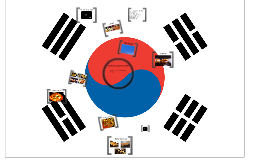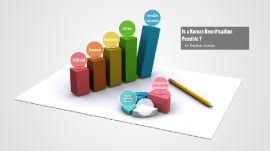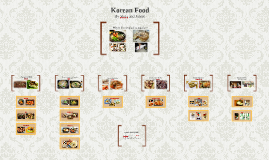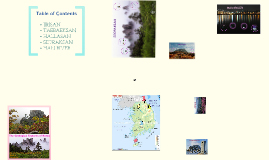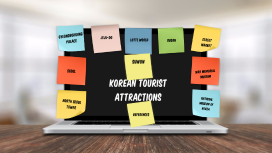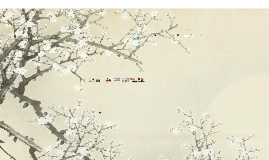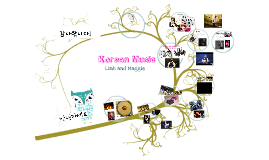Korean Presentation
Transcript: by Rayhan Aurelio Is a Korean Reunificaition Possible ? Background Information How did Korea split into two in the first place ? Aftermath of WW2 Post World War 2 - After the Japanese was defeated in 1945, Japan lost all of it's conquered territories including Korea (this is known as The Postdam Declaration). - The United Nation then decided that Korea will be splitted into two, the Northern part given to Soviet hands, while the Southern part was given to the United States. They were devided by the line also known as the 38th parallel. The Korean war - The Cold War started in 1947, after the rising tensions between the US (and it's allies) and the Soviets to show who was more powerful (communism or capitalism). The Cold War - Instead of fighting the USSR directly, the US would fight in proxy wars against the Soviets in numerous countries like Afghanistan, Vietnam, and Korea. The Korean War -On June 1950, under Stalin's command to Kim Il Sung, the North Korean began to invade the South which started the Korean War -Due to lacking in military funding of the South, the North easily took most parts of present day South Korea. -On July, the US aided the South and expanded it's territory all the way up to the Yalu river. -The Chinese feeling threatened by the war happening near their soil aided the North and pushed back the United States back down south. -Once the south is pushed back to the 38th parallel, peace talks start to occur between the nations, but nothing came out of it and only a cease fire was signed. Why has reunification yet to occur ? Why has reunification yet to occur ? Political reasons Political -North Korea has strong backing with their former Soviet neighbors which are Russia and China Allies Allies -South Korea has strong backing with countries formerly in the Allies side of World War 2 mainly the United States. -Given this, the background political ideologies of both nations already greatly differ. -North Korean's current leader Kim Jong Un is infamously known for being anxious on his power status. This is shown when he had reportedly executed his uncle Jang Song-Thaek in 2013 and his half brother Kim Jong Nam in early 2017 over the fear of being overpowered. Power Anxiety Power Anxiety Economy Economy -The South Koreans adopted the free market capitalist economy, closer to a Western ideology economy. Economic differences in both nations Economic differences in both nations -Meanwhile, the North officially adopted a socialist economy, however their economy is closer to a totalitarian dictatorship, due to it's heavy reliance on command economy. Unsurprisingly, due to this difference in the market system the South had managed to surpass the North by a huge margin. Who's better than who ? Who's better than who ? The Miracle of the Han River The Miracle of the Han River -The miracle of the Han river occured during 1961-1997, in which South Korea's economy increased tremendously, thus turning it from a developing country to a developed one. What is this miracle ? What is this miracle ? -This is mainly influenced by South Korea succesfuly hosting it's 1988 Summer Olympics, and the rise of large family conglomerates like LG, Samsung, and Hyundai. Cost of Reunification Cost of Reunification - Suppose South and North Korea were to reunite today, it would cost South Korea from 1 trillion to 4 trillion USD, depending on if they were able to retake the North peacefully or using war. In contrast, South Korea's current GDP is 1.4 trillion USD. How much would it cost ? How much would it cost ? - Reunification would also cost at least a decrease of 10,000 USD in GDP per capita of South Korea. Source: https://www.forbes.com/2010/03/15/north-south-korea-asia-reunite-opinions-contributors-charles-wolf-jr.html#3ea3a23477f1 It is important to also realize that there are also benefits of reunification for South Korea for them to spend a lot of money on reunifying. Benefits of Reunification Benefits of Reunification -What people might not have realized is that North Korea can actually be a rich nation if they wanted to. This is due to their natural resources including iron, gold, magnesite, zinc, copper, limestone, molybdenum and graphite that is nearly worth $6 trillion USD. This might make reunification a worthy investment to the South. Natural Resources Natural Resources - A lot of South Korean companies might see a benefit of reunification by the means of cheaper labor. If North Korea were to rejoin the South into a unified Korea, their status would be equivalent to that of a developing country which would result in cheaper labor. This may cause some companies to outsource their factories to the Northern part of Korea instead of abroad like to China. This would also increase employment rate in the country. Cheaper Labor Cheaper Labor Geogrpahical Geographical - North Korea acts as a hub to both China and Russia to South Korea a United States ally. Traditional Fear Traditional Fear -If North Korea gets liberated






